The tourists have gone, normal television service has resumed and official merchandise fills up the bargain bins. With the summer 2012 Olympics now over, it is hoped that a lasting legacy will be created for the nation through the sustainable, social, economic and sporting legacies. However, sitting in east London, the Olympic Stadium is a physical reminder, an imposing addition to the London skyline. With the hype now gone, what is the future of this centrepiece for the summer games and just what do you do with buildings of this nature when they come to the end of their lives?
Since the early 1890s when the nascent International Olympic Committee decided that the modern Olympics would not have a permanent base, as was the ancient tradition, cities have fought hard to host the games. On 6 July 2005, London eagerly awaited the outcome of its application to become 'Olympic city' in 2012. London was successful and would provide the necessary venues, facilities and infrastructure that would make the UK the centre of the world's attention for the summer sporting festivities.
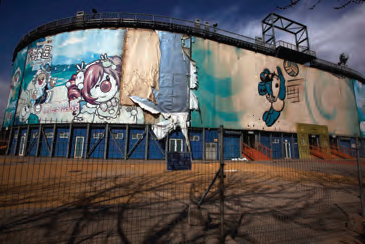
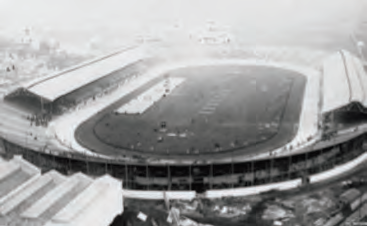
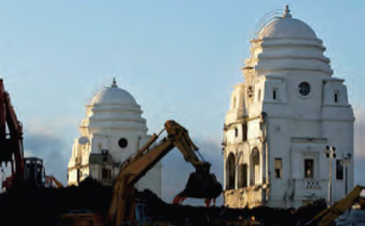
White elephants?
To host the largest sporting event in the world creates an obvious need for significant expenditure and investment in venues, which can lead to both positive and, unfortunately, negative consequences. Although the Olympics provide the opportunity for the host city to create, impress and dazzle those watching, they also impose demands that are quite different from other smaller sporting events. Many cities struggle to find alternative users for their imposing venues once the crowds have gone. Most recently, this has been the case in Beijing 2008 with the 'Water cube' Aquatics centre, the 'Birds nest' Stadium.
This 'white elephant' syndrome is not unique to the Olympics however; South Africa's World Cup stadia are failing to provide sufficient revenue since the 2010 event closed.
White City Olympic Stadium 1908
The first Olympic Stadium built in the UK was for the 1908 Games and was the largest of its day, holding 93,000 spectators, with 63,000 seated. Originally scheduled for Rome, a volcanic eruption of Mount Vesuvius in 1906 caused relocation of the games to London. A concrete stadium was constructed to house athletics, cycling, swimming and diving. In the years that followed the Olympics, it was used for greyhound racing and subsequently underwent renovation and reconfiguration to allow for events such as national and international athletics. Greyhound racing made a reappearance following the move of athletics to Crystal Place in 1971, but the stadium's days were numbered and in 1985 it was demolished.
Wembley Olympic Stadium 1948
The UK's second Olympic Stadium at Wembley played host for the 1948 summer Olympics but is perhaps better known for its association with football. This was not a purpose-built stadium; it was originally built for the 1924 British Empire Exhibition and restored for the Olympics. Since 1948 it has accommodated football, speedway, rugby (union and league), greyhound racing, hockey, boxing and wrestling. In 1975 it staged a show by daredevil stuntman Evel Knievel; he crashed in front of 90,000 spectators when he tried to jump 13 double-decker buses! Officially known as the Empire Stadium with the iconic twin towers, it also had success as musical venue, hosting the now legendary British leg of the Live Aid concerts in 1985. It was demolished in 2002 to make way for the new Wembley Stadium, completed in 2007.
Olympic Stadium 2012
While the London 2012 Olympics comprised some 34 venues, only 8 of these are permanent. Temporary structures such as arenas in Greenwich Park and Horse Guards Parade, which can be reused for future competitions, were provided. Also, existing stadia and venues in London and across the country were adapted for use, such as Wembley Stadium and Arena, the Excel Centre, Earls Court and St James’ Park in Newcastle.
The requirements for a main Olympic stadium often result in difficulties in accommodating other uses. It has to be the focus for the opening and closing ceremonies, be open-air with around 80,000 seats and be used for the athletics competitions.
A guiding principle in the design and development of the London stadium was the ability of it to be reused after the games. Many stadia in the past have been converted to host alternative sports, however, the London 2012 Organising Committee (LOCOG), chaired by Lord Sebastian Coe, were keen to provide an athletics legacy for London after the games, by leaving the track in place for both community and elite athletics. Designed by Populous (formally HOK sport), the Olympic Stadium went against the grain of previous permanent and monumental constructions. It embraced the temporary, with seating that could be removed after the games, and it had fewer permanent internal concession stands, instead providing temporary facilities located outside.
Planned and constructed in the midst of worldwide financial crises, some of the original design features had to be shelved. However, in some respects, the temporary nature of the building was also used as an asset; strong colours could be used since long-term fade due to climatic conditions was not an issue.
Since its inception, many organizations have been linked to the stadium for future uses, from bringing Formula 1 racing to the area to relocation of football clubs including West Ham and Leyton Orient. As it stands, the stadium capacity is simply too big for these uses, and the rake of the seating and retention of the running track are simply not conducive to the football atmosphere and will require expensive modifications - a figure of £160 million has been cited. The City of Manchester Stadium for the 2002 Commonwealth Games was successfully converted to football use as the Etihad Stadium, home of Manchester City. Here, the running track was removed, the football pitch added 6 m lower and more raked seating added.
The Olympic Stadium has already proved a successful concert venue and, indeed, it was use as a music and concert venue (in the form of the O2 Arena) that saved the Greenwich Millennium Dome, although it could be argued that little more than the 'shell' was retained.
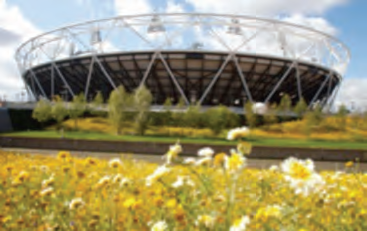
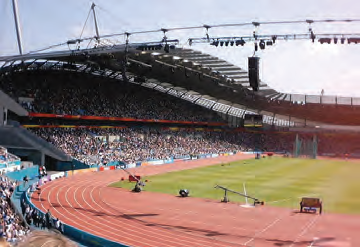
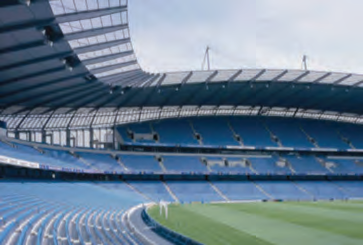
Other uses - Highbury and Vicarage Road
Not all stadia have been developed with a 'future' use in mind, with many older stadia being developed over years and in ad hoc fashion. Without the protection of listing, Arsenal FC's Highbury Stadium would have probably been demolished following the Taylor Report and Hillsborough Disaster.
With its standing capacity dramatically reduced to accommodate seating and being situated within a built-up area, the club had no choice but to relocate to a new stadium, vacating the ground they had called home since 1913. The art-deco styled east stand on Avenell Road, by C W Ferrier, was listed grade II in 1997. The listing only related to the fabric of the building rather than its surrounding context, but getting rid of the pitch would have left the redevelopment without a relevant feature. Allies and Morrison's Highbury Square conversion created 725 new apartments around a 100 x 70 m pitch sized garden.
The 'Wrap' at Watford is an affordable housing development of 164 key worker homes around the Rookery End of the Watford FC's Vicarage Road Stadium. This is an addition rather than a redevelopment but does illustrate how a working football club can coexist with residential use. It presented a different set of challenges, such as noise attenuation from crowds, security issues and clear separation of access.
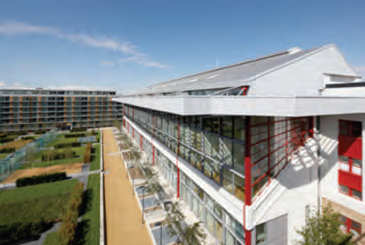
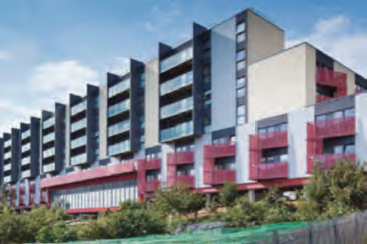
Conclusion
So what is the future of the stadium? Not all sporting uses can coexist and multipurpose sports stadia are often ruled out due to different pitch and spectator requirements. However, there are many examples in the UK of compatible sports, such as football and rugby, successfully sharing a stadium.
Existing venues used for the 2012 Olympics will revert back to their original roles: London ExCel to exhibitions rather than boxing and Horse Guards Parade to Trooping the Colour rather than beach volleyball. New venues, such as the Aquatics centre and Velodrome, will continue on in their current form and use but will welcome participation of the local community, clubs and schools alongside the elite.

